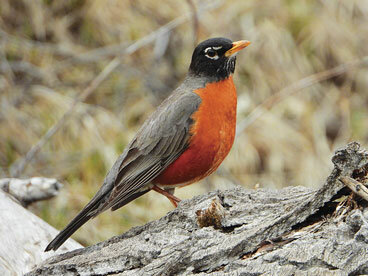
Photo courtesy Charles Martinez
This week’s Bird of the Week, compliments of the Weminuche Audubon Society and Audubon Rockies, is the American robin.
This is one of the first birds that children are taught to recognize and is familiar both in appearance and in song. The American robin has not only adapted to urbanization and agricultural development, but has actually benefited from these landscape changes. Its large breeding range extends from Alaska through Canada and across the lower United States.
Both sexes appear plump and have dark backs and heads, broken white eye-rings and distinctive orange-colored breasts. Females are paler than males and young birds have spotted instead of orange breasts.
The American robin’s scientific name, turdus migratorius, suggests a bird that follows regular seasonal movements, but nomadic describes their travels better than migratory does. Their winter range depends on local food supplies and, in many areas, robins may migrate one year and not the next.
Although we think of these birds as a sign of spring, while robins aren’t as common, they don’t entirely disappear from our region in winter. Year-round, fruits and berries provide 60 percent of a robin’s diet and sustain them through the winter.
In spring and summer, we are used to seeing them hopping across our lawns and in forest openings in search of earthworms, snails, spiders and insects. Standing still with head cocked to the side, a robin uses its sharp eyesight to detect a worm poking out of the ground or movements in the soil and grass which signal the presence of one below the surface. Rain and irrigation which drive earthworms to the surface provide robins with a feast.
In winter, robins are social birds, gathering in large flocks to forage and roost, but in spring it’s time to find a mate. In breeding season, a male robin greets the day with song, starting even before the sun lights up the sky. Robins are one of the first songbirds to lay eggs in spring and may raise up to three broods in a season, but only 25 percent of these birds that fledge survive to November.
For information on events, visit www.weminucheaudubon.org and www.facebook.com/weminucheaudubon/.